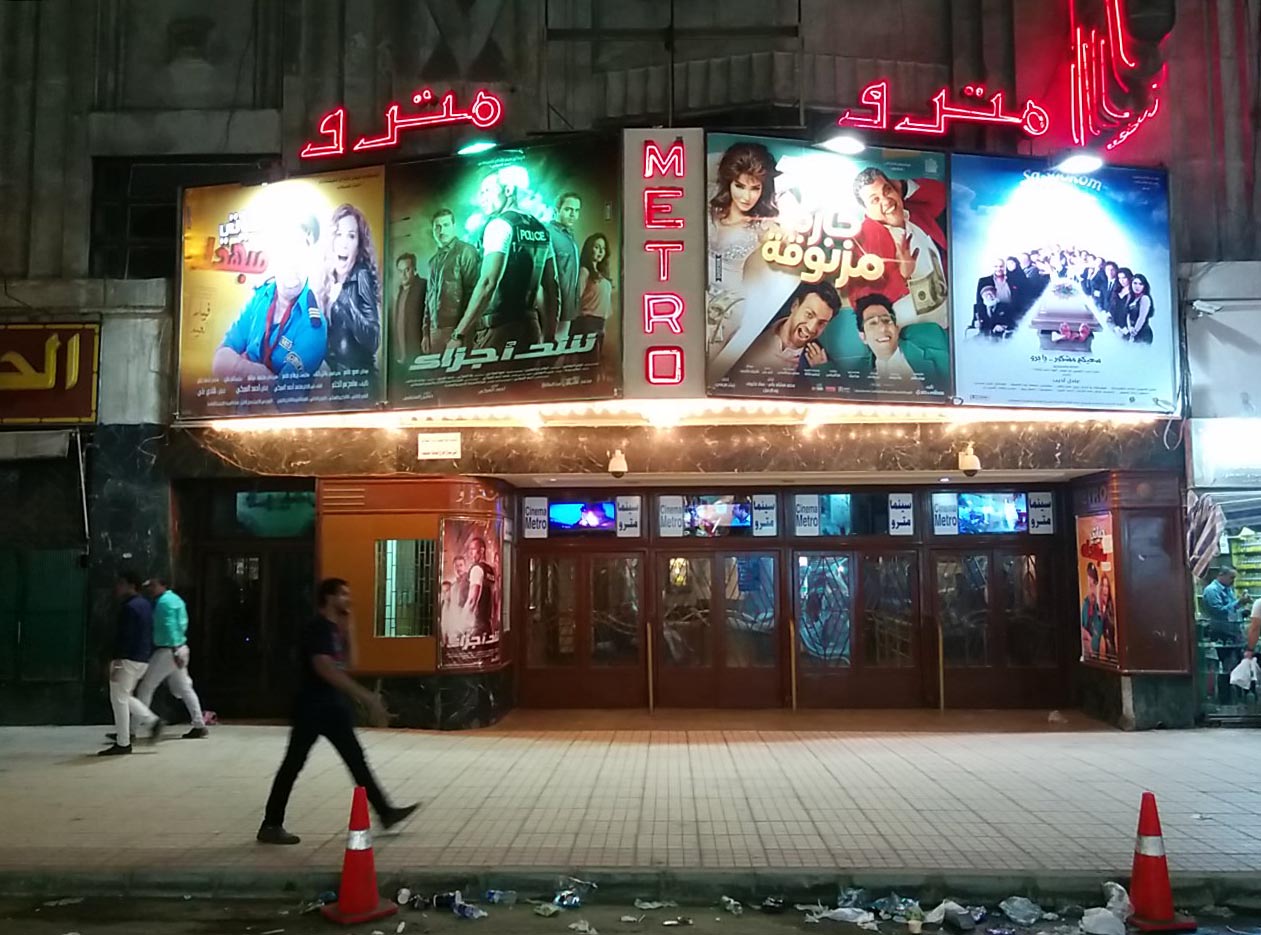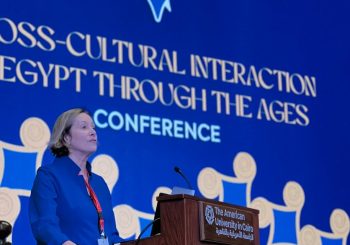Movie theaters are a gateway to the outside world, a chance to transcend into a realm far from reality. Before the creation of multiplex theaters, movie theaters were simple and infused with nostalgic touches. Egyptians’ love for cinema was born in Alexandria, the first city in Egypt to bring motion picture screening in 1896. Nevertheless, Cairo, the city with the largest populations and movie fanatics, is home to some of Egypt’s most iconic and remarkable movie theaters.
Metro Cinema

Located at 35 Soliman Pasha Street, now known as Talaat Harb Street, Metro Cinema is a cornerstone of downtown Cairo. Considered one of the oldest movie theaters in Egypt’s capital, Metro opened back in 1938 when it showcased the American classic movie ‘Gone with the Wind’. The movie theater became the runner for Metro Goldwyn Mayer (MGM) movies in Cairo. Streamlined with modern and luxurious hues, the cinema’s Art Deco style was inspired by industrial architecture, being the first theater in Cairo to have air conditioning. Nowadays, Metro Cinema shows a broader range of blockbuster movies produced internationally as well as nationally.
Cinema Miami

Located directly across the street from Metro Cinema, Miami cinema was established in 1939. The theater was originally designed to be plein-air cinema, which means the screen halls had no roof. Laced in culture, the iconic cinema is still fully operating.
Diana Cinema

Sitting majestically in a corner off of Mohamed Alfi and Emad el-Deen streets in downtown Cairo, the Diana Cinema, previously known as the Diana Palace, was opened in the 1930s. The Art-deco style exterior of the theater beautifully mirrors its elegant interior, embellishing it as one of Cairo’s most stylish cinemas that has not been influenced by the wave of modernization. The Art Deco-styled cinema is still fully running until this day.
Radio Cinema

Situated just off Talaat Harb Street, the ever outstanding Radio Cinema was originally built in the 1930s but was split into two large halls: Radio Cinema and Theater in the late 1980s. The theater’s halls premiered some of Egypt’s most celebrated movies and hosted Egypt’s soulful queen, Umm Kulthum. The cinema’s activities came to a halt in the mid-2000s; however, it was revived in 2009 by Al Ismaelia for Real Estate Development. Cairo’s once cosmopolitan center now has different functions, where it hosts multiple film screenings and events and is home to Egypt’s favorite smooth-tongued puppet show, ‘Abla Fahita.’
Among these iconic theaters are other cinemas that have faded with the passage of time. Cinema Wahba, located in the Khalifa district, along other cinemas such as the Lido, the Kursaal, the Rio, and Le Pigale have all swayed away from their Art Deco prime eras.
In 1987, author Jane Gaffney, in the journal article ‘The Egyptian Cinema: Industry and Art in a Changing Society,’ underscores the importance of cinema in Egypt as a cultural influence in the Arab world.
“It is the oldest and largest film industry in the region. As a result of their widespread distribution throughout the rest of the Arab world, Egyptian films have profoundly influenced popular culture tastes in the regions, including such diverse elements as linguistic expression and household furnishing. As this cultural center has influenced the production of literary forms in other Arab countries, Egypt has contributed significantly to the development of their cinemas,” explains Gaffney.







Comment (1)
[…] 4 من أقدم المسارح الفضية في القاهرة “أتمنى لو كنت هنا”: بطاقات بريدية قديمة من مصر […]